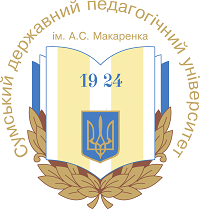CROSS-CULTURAL COMMUNICATIONS: STEREOTYPES ABOUT THE ITALIAN LANGUAGE BASED ON ITS HISTORY
DOI:
https://doi.org/10.32782/philspu/2025.9.5Keywords:
Italian language, Latin language, history, Tuscan dialect, stereotype, dialects, stigmatization, social statusAbstract
The Italian language is the result of a combination of classical Latin, regional dialects, and the Tuscan literary tradition, which has led to its unique formation. The article examines the influence of these elements on the formation of the modern linguistic picture of Italy and the emergence of stereotypes about the Italian language, emphasizing the importance of understanding their historical roots for an objective perception of Italian culture. It has been found that widespread stereotypes, in particular the idea of easy understanding of Latin by Italian speakers, although it has a high degree of lexical similarity to Latin (89%), and the association of dialects with low social status, are historically determined. It is determined that these stereotypes, which are actively disseminated by the media and popular culture, affect the perception of the Italian language and its speakers, forming prejudices about their cultural identity. In particular, it is emphasized that the stereotype of easy comprehension of Latin by Italians is false due to significant linguistic changes over time, and dialects have historically been stigmatized due to their association with low education and social status, which dates back to the unification of Italy and the introduction of a single state language. The article describes the historical development of the Italian language from the Roman Empire to the present day, when vulgar Latin became the basis for the formation of Italian, and highlights key historical figures such as Dante Alighieri, Petrarch, Boccaccio, and Pietro Bembo, whose contribution to literature and codification of the language influenced its development and stereotyping. It is emphasized that Dante's choice to write the Divine Comedy in the Florentine dialect was a decisive moment in its formation as a literary norm, and the works of other Renaissance authors contributed to the consolidation of the Tuscan tradition in the literary language. It has been found that despite the linguistic affinity, Italian speakers do not always understand Latin due to phonetic, grammatical and lexical differences that have arisen over the centuries, and the use of dialects has historically been stigmatized due to the association with low education and social status. The article summarizes the need to critically analyze these stereotypes for an objective understanding of Italian culture and linguistic diversity.
References
Martin M. A Linguistic History of Italian. Taylor and Francis, Hoboken. 2014. 4 p.
Lepschy A, Lepschy G. C. The Italian language today (2nd ed.). New York: New Amsterdam. 1988, pp. 35.
Wall E. Bilingualism in the Classroom: Using Latin as an Aid to the Learning of Modern Italian. Cambridge University Press. The Journal of Classics Teaching 19 (38). 2018. p. 33. URL: https://www.cambridge.org/core/services/ aop-cambridge-core/content/view/DC8F801C7E417F02F5CEA5E162F002FB/S2058631018000193a.pdf/bilingualism_ in_the_classroom_using_latin_as_an_aid_to_the_learning_of_modern_italian.pdf
History of the Italian Language. URL: https://www.europassitalian.com/learn/history/
Italian’s similarities to Latin. URL: https://www.polilingua.com/blog/post/italian-similarities-to-latin.htm
Latin words and expression used in Italian. URL: https://danteinlinea.com/blog/en/latin-words-used-in- italian/
Timeline of Italian language history. URL: https://www.dilit.it/en/doc/learn-Italian-language/italian_language_ history_timeline.html#:~:text=Italian%20language%20history-,Timeline%20of%20Italian%20language%20history,- Learning%20Italian%2C%20like
Baldoli C. History of Italy. Macmillan Essential Histories. Vol. 34. 2009, 256 p.
The Fascinating Journey of the Italian Language. URL: https://www.dynamiclanguage.com/the-fascinating-journey- of-the-italian-language/
Italian Language History. URL: https://www.todaytranslations.com/files/2019/03/Italian-Language-History.pdf







